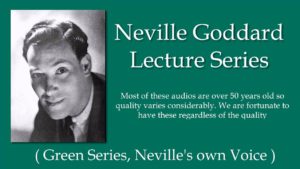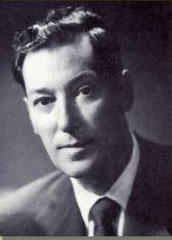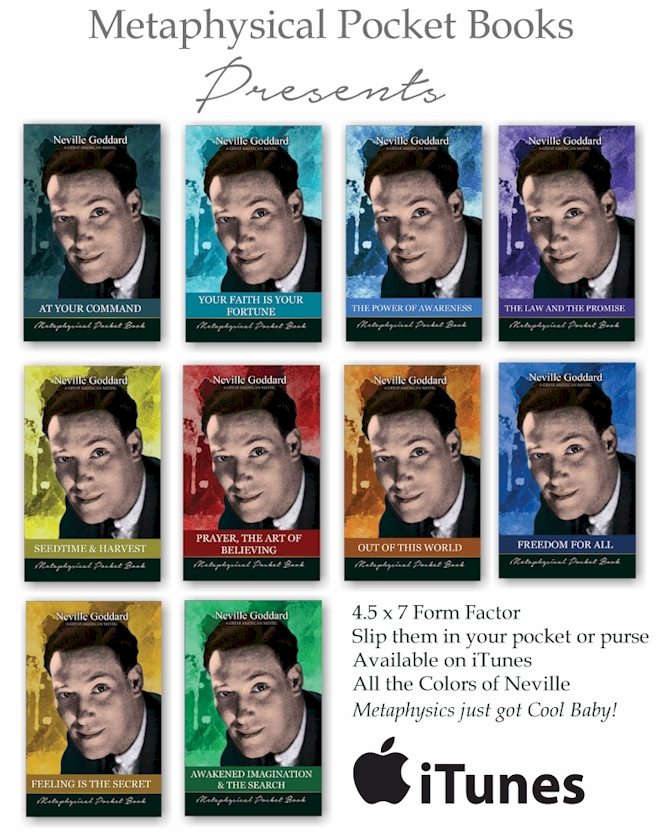Out Of This World, Neville Goddard
ASSUMPTIONS BECOME FACTS
| Chapter 2 |
Men believe in the reality of the external world because they do not know how to focus and condense their powers to penetrate its thin crust.
This book has only one purpose – the removing of the veil of the senses – the traveling into another world.
To remove the veil of the senses we do not employ great effort; the objective world vanishes by turning our attention away from it.
We have only to concentrate on the state desired in order to mentally see it, but to give it reality so that it will become an objective fact, we must focus attention upon the invisible state until it has the feeling of reality.
When, through concentrated attention, our desire appears to possess the distinctness and feeling of reality, we have given it the right to become a visible concrete fact.
If it is difficult to control the direction of your attention while in a state akin to sleep, you may find gazing fixedly into an object very helpful. Do not look at its surface but into and beyond any plain object such as a wall, a carpet, or any other object which possesses depth.
Arrange it to return as little reflection as possible. Imagine then that in this depth you are seeing and hearing what you want to see and hear until your attention is exclusively occupied by the imagined state.
At the end of your meditation, when you awake from your ―controlled waking dream,‖ you feel as though you had returned from a great distance.
The visible world which you had shut out returns to consciousness and by its very presence informs you that you have been self-deceived into believing that the object of your contemplation was real.
But, if you know that consciousness is the one and only reality, you will remain faithful to your vision, and by this sustained mental attitude confirm your gift of reality, and prove that you have the power to give reality to your desires that they may become visible concrete facts.
Define your ideal and concentrate your attention upon the idea of identifying yourself with your ideal. Assume the feeling of being it, the feeling that would be yours were you already the embodiment of your ideal. Then live and act upon this conviction. This assumption, though denied by the senses, if persisted in, will become fact. You will know when you have succeeded in fixing the desired state in consciousness by simply looking mentally at the people you know.
In dialogues with yourself you are less inhibited and more sincere than in actual conversations with others, therefore the opportunity for self-analysis arises when you are surprised by your mental conversations with others.
If you see them as you formerly saw them, you have not changed your concept of self, for all changes of concepts of self result in a changed relationship to your world.
In your meditation allow others to see you as they would see you were this new concept of self a concrete fact. You always seem to others an embodiment of the ideal you inspire. Therefore, in meditation, when you contemplate others, you must be seen by them mentally as you would be seen by them physically were your concept of self an objective fact; that is, in meditation you imagine that they see you expressing that which you desire to be.
If you assume that you are what you want to be your desire is fulfilled, and, in fulfillment, all longing is neutralized. You cannot continue desiring what you have already realized. Your desire is not something you labor to fulfill, it is recognizing something you already possess. It is assuming the feeling of being that which you desire to be. Believing and being are one.
The conceiver and his conception are one, therefore that which you conceive yourself to be can never be so far off as even to be near, for nearness implies separation. “If thou canst believe, all things are possible to him that believeth‖ [Mark 9:23].
Being is the substance of things hoped, the evidence of things not yet seen [cf. Hebrews 11:1].
If you assume that you are what you want to be, then you will see others as they are related to your assumption
If, however, it is the good of others that you desire, then, in meditation, you must represent them to yourself as already being that which you desire them to be.
It is through desire that you rise above your present sphere and the road from longing to fulfillment is shortened as you experience in imagination what you would experience in the flesh were you already the embodiment of the ideal you desire to be.
I have stated that man has at every moment of time the choice before him which of several futures he will encounter; but the question arises; ―How is that possible when the experiences of man, awake in the three-dimensional world, are predetermined?” as his observation of an event before it occurs implies. This ability to change the future will be seen if we liken the experiences of life on earth to this printed page.
Man experiences events on earth singly and successively in the same way that you are now experiencing the words of this page.
Imagine that every word on this page represents a single sensory impression. To get the context, to understand my meaning, you focus your vision of the first word in the upper left-hand corner and then move your focus across the page from left to right, letting it fall on the words singly and successively. By the time your eyes reach the last word on this page you have extracted my meaning. Suppose, however, on looking at the page, with all the printed words thereon equally present, you decided to rearrange them. You could, by rearranging them, tell an entirely different story; in fact; you could tell many different stories.
A dream is nothing more than uncontrolled four-dimensional thinking, or the rearrangement of both past and future sensory impressions. Man seldom dreams of events in the order in which he experiences them when awake.
He usually dreams of two or more events which are separated in time, fused into a single sensory impression; or, in his dream, he so completely rearranges his single waking sensory impressions that he does not recognize them when he encounters them in his waking state.
For example; I dreamed that I delivered a package to the restaurant in my apartment building. The hostess said to me, ―You can’t leave that there‖; whereupon, the elevator operator gave me a few letters and as I thanked him for them, he, in turn, thanked me. At this point, the night elevator operator appeared and waved a greeting to me.
The following day, as I left my apartment, I picked up a few letters which had been placed at my door. On my way down I gave the day elevator operator a tip and thanked hem for taking care of my mail; whereupon, he thanked me for the tip. On my return home that day I overheard a doorman say to a delivery man, ―You can’t leave that there.‖ As I was about to take the elevator up to my apartment, I was attracted by a familiar face in the restaurant, and, as I looked in, the hostess greeted me with a smile. Late that night I escorted my dinner guests to the elevator and as I said good-bye to them, the night operator waved good-night to me.
By simply rearranging a few of the single sensory impressions I was destined to encounter, and by fusing two or more of them into single sensory impressions, I constructed a dream which differed quite a bit from my waking experience.
When we have learned to control the movements of our attention in the four-dimensional world, we shall be able to consciously create circumstances in the three-dimensional world.
We learn this control through the waking dream, where our attention can be maintained without effort, for attention minus effort is indispensable to changing the future. We can, in a controlled waking dream, consciously construct an event which we desire to experience in the three-dimensional world.
The sensory impressions we use to construct our waking dream are present realities displaced in time or the four-dimensional world. All that we do in constructing the waking dream is to select from the vast array of sensory impressions those, which, when they are properly arranged, imply that we have realized our desire. With the dream clearly defined we relax in a chair and induce a state of consciousness akin to sleep – a state, which, although bordering on sleep, leaves us in conscious control of the movements of our attention. When we have achieved that state, we experience in imagination what we would experience in reality were this waking dream an objective fact. In applying this technique to change the future it is important always to remember that the only thing which occupies the mind during the waking dream is the waking dream, the predetermined action which implies the fulfillment of our desire.
How the waking dream becomes physical fact is not our concern.
Our acceptance of the waking dream as physical reality wills the means for its fulfillment.
Let me again lay the foundation of changing the future, which is nothing more than a controlled waking dream.
Define your objective–know definitely what you want.
Construct an event which you believe you will encounter following the fulfillment of your desire – something which will have the action of self predominant – an event which implies the fulfillment of your desire.
Immobilize the physical body and induce a state of consciousness akin to sleep; then, mentally feel yourself right into the proposed action – imagining all the while that you are actually performing the action here and now so that you experience in imagination what you would experience in the flesh were you now to realize your goal.
Experience has convinced me that this is the perfect way to achieve my goal.
However, my own many failures would convict me were I to imply that I have completely mastered the movements of my attention.
I can, however, with the ancient teacher say: “This one thing I do, forgetting those things which are behind, and reaching forth unto those things which are before, I press toward the mark for the prize.” [Philippians 3:13,14.]

 Buy 125 of Neville's Lectures in his own voice for $24.95
Buy 125 of Neville's Lectures in his own voice for $24.95 Out Of This World
Out Of This World